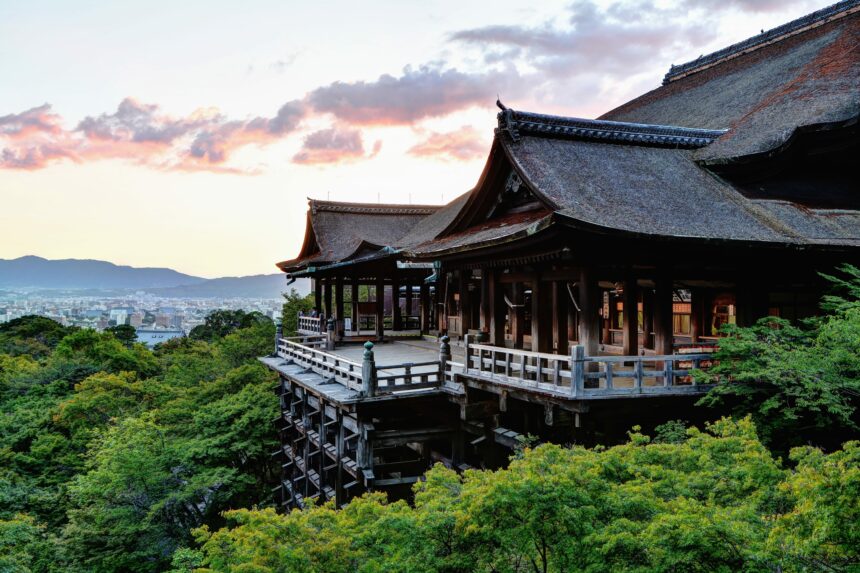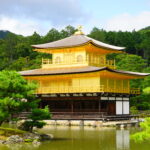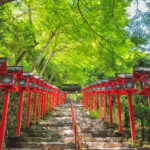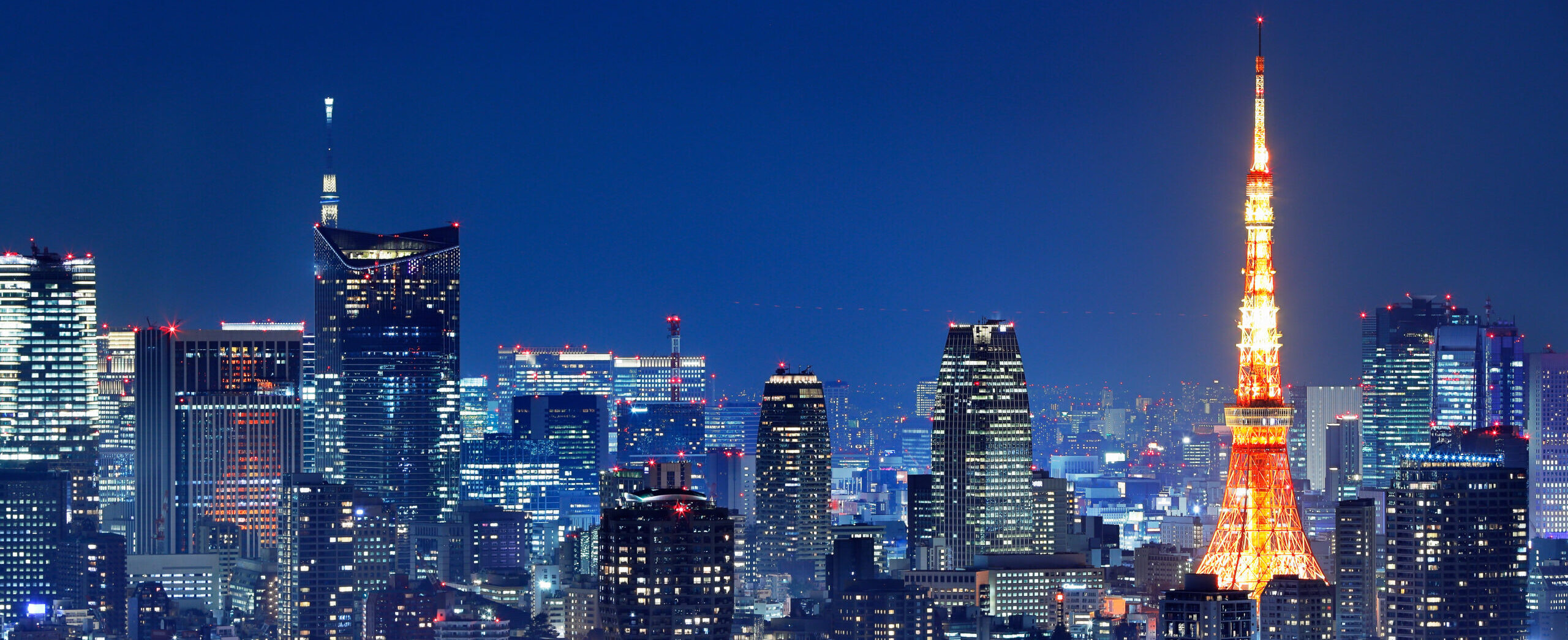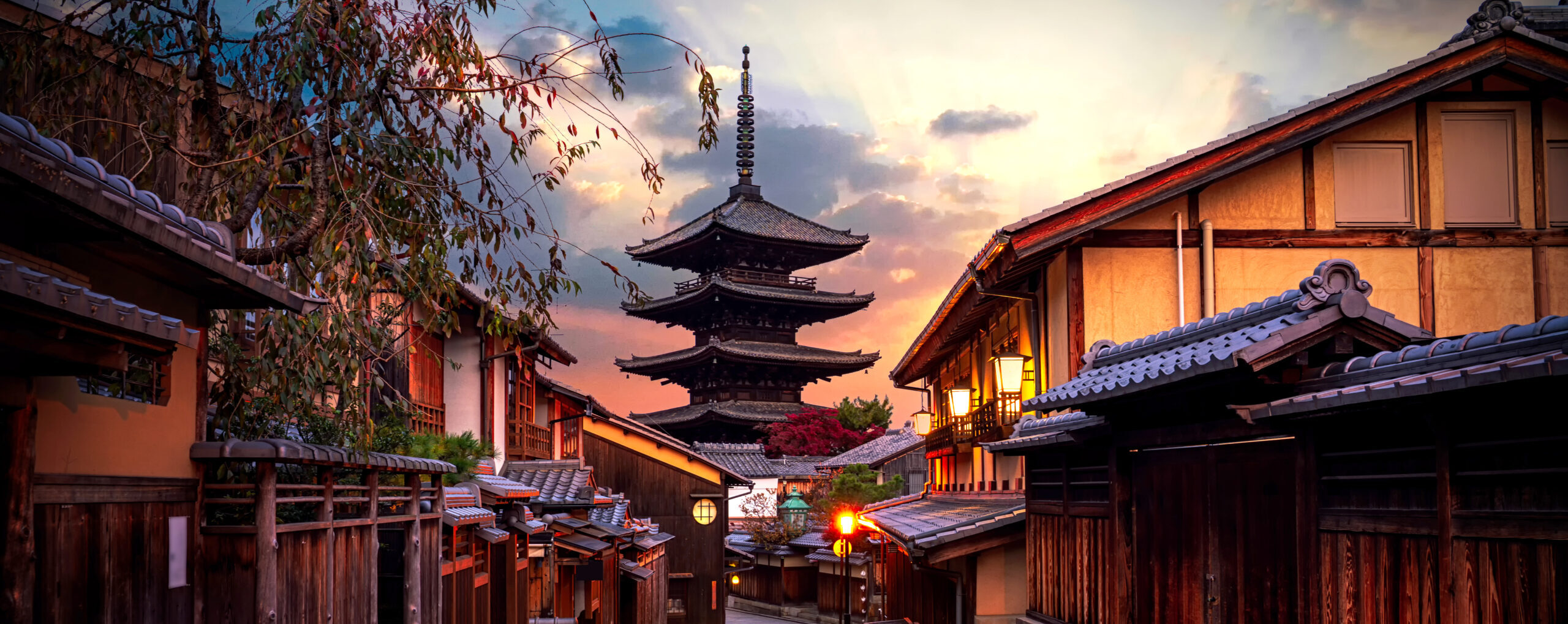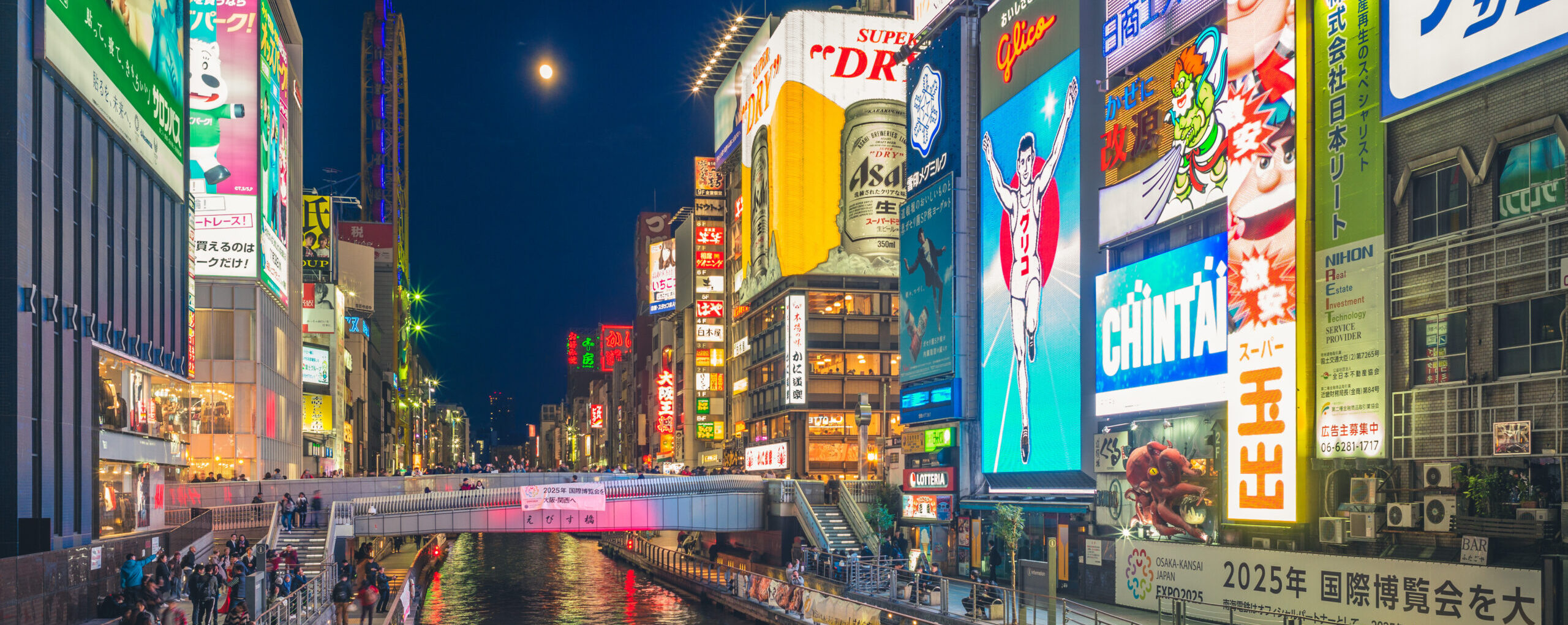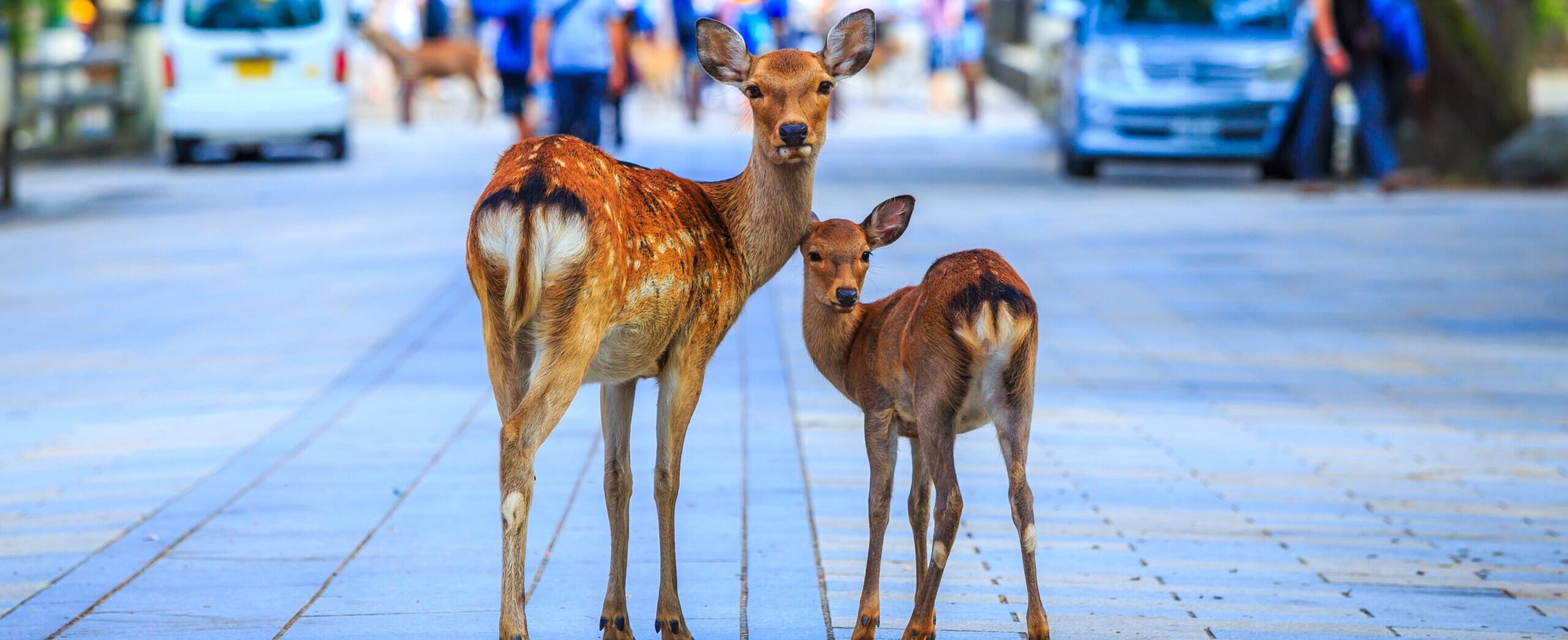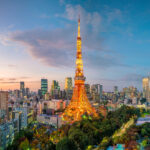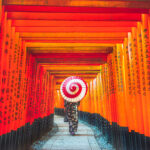In this Article
1. Overview of Kiyomizu-dera
Kiyomizu-dera, one of Kyoto’s most celebrated temples, is renowned for its beautiful wooden stage that extends out from the main hall, offering visitors a panoramic view of the city and surrounding nature. This UNESCO World Heritage Site is set on the scenic slopes of Mount Otowa and draws millions of visitors each year for its historical significance and breathtaking views.
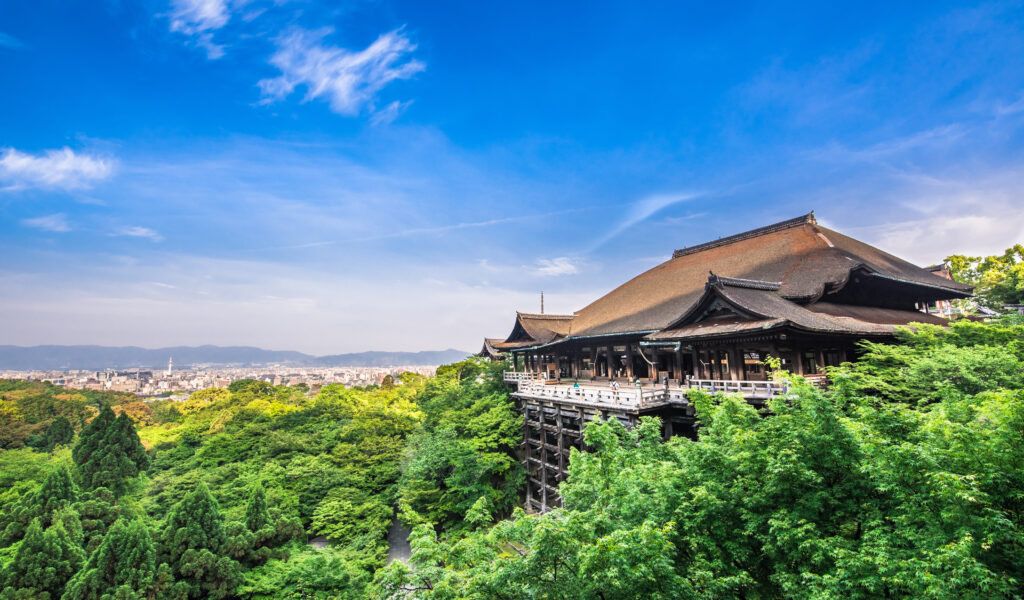
2. History of Kiyomizu-dera
Founded in 778, Kiyomizu-dera has a rich history rooted in Japan’s Heian period. The temple was originally associated with the Hosso sect of Japanese Buddhism but became independent in the 1960s. The name “Kiyomizu” means “pure water,” derived from the Otowa Waterfall that flows on the temple grounds and is believed to have spiritual significance. Despite its long history, the current structures were built in 1633 and have undergone numerous renovations to preserve the temple’s legacy.
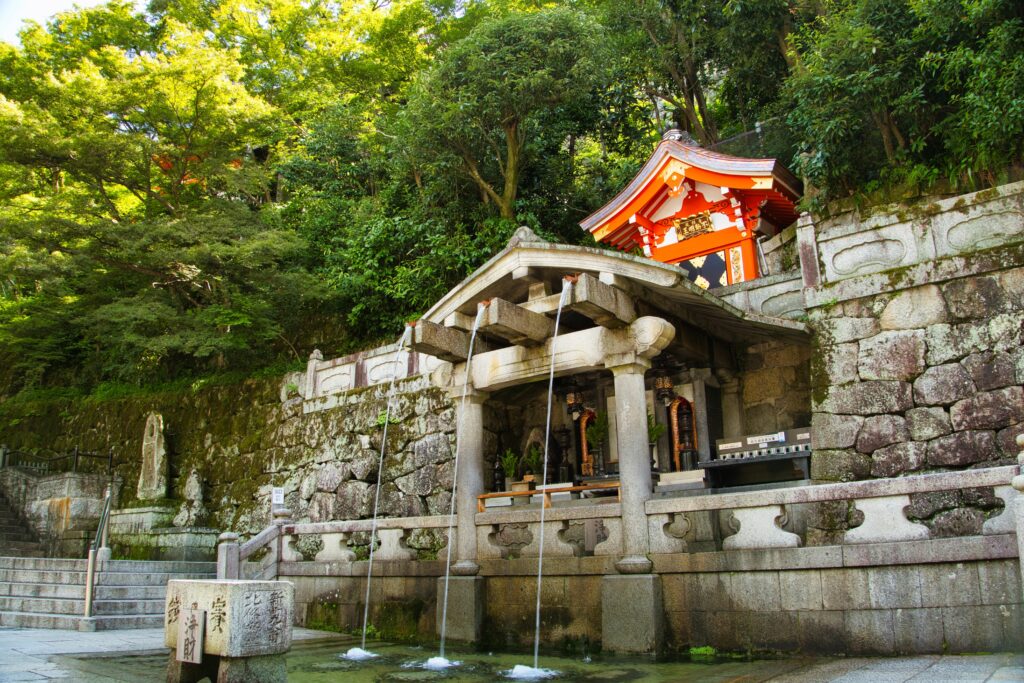
3. Highlights of Kiyomizu-dera
The Wooden Stage
The temple’s most iconic feature is the large wooden stage that juts out from the main hall, known as the Kiyomizu Stage. Constructed without a single nail, this impressive structure allows visitors to enjoy breathtaking views of cherry blossoms in spring and vibrant maple leaves in autumn.
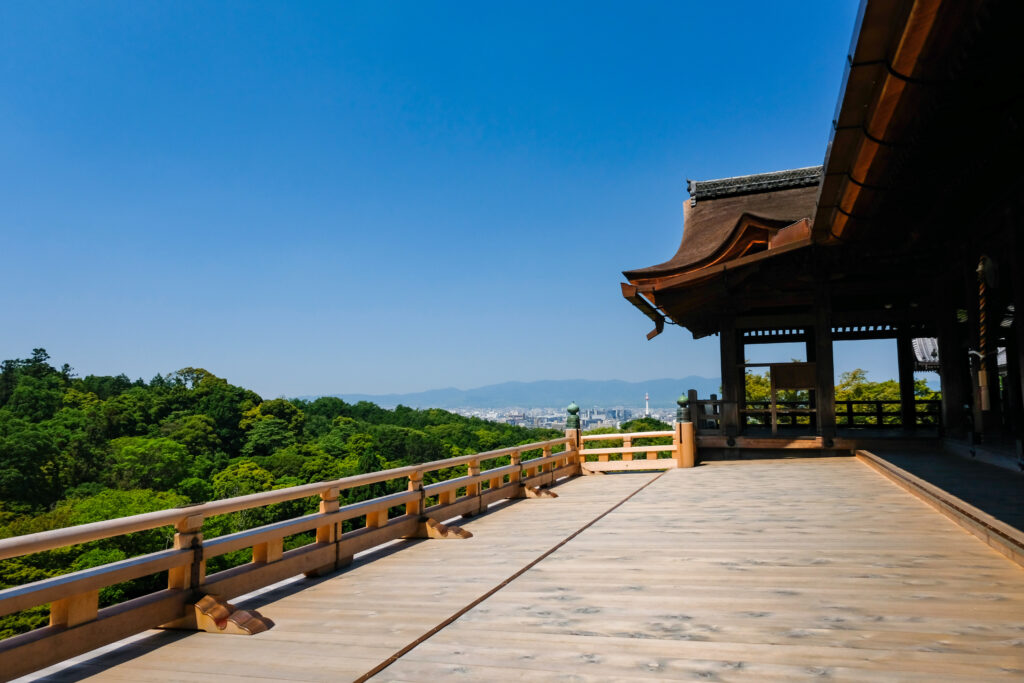
The Otowa Waterfall
At the base of the main hall lies the Otowa Waterfall, where visitors can drink from three streams of water, each believed to offer unique benefits: success in academics, love, and longevity. Visitors often line up to drink from the waterfall using ladles, as it is considered a sacred experience.
Jishu Shrine
Located within the Kiyomizu-dera grounds is Jishu Shrine, dedicated to the deity of love and matchmaking. The shrine is popular with visitors who come to pray for romantic success. A unique aspect of this shrine is the “Love Stones,” placed 18 meters apart; it is said that if you can walk from one stone to the other with your eyes closed, your romantic wishes will come true.
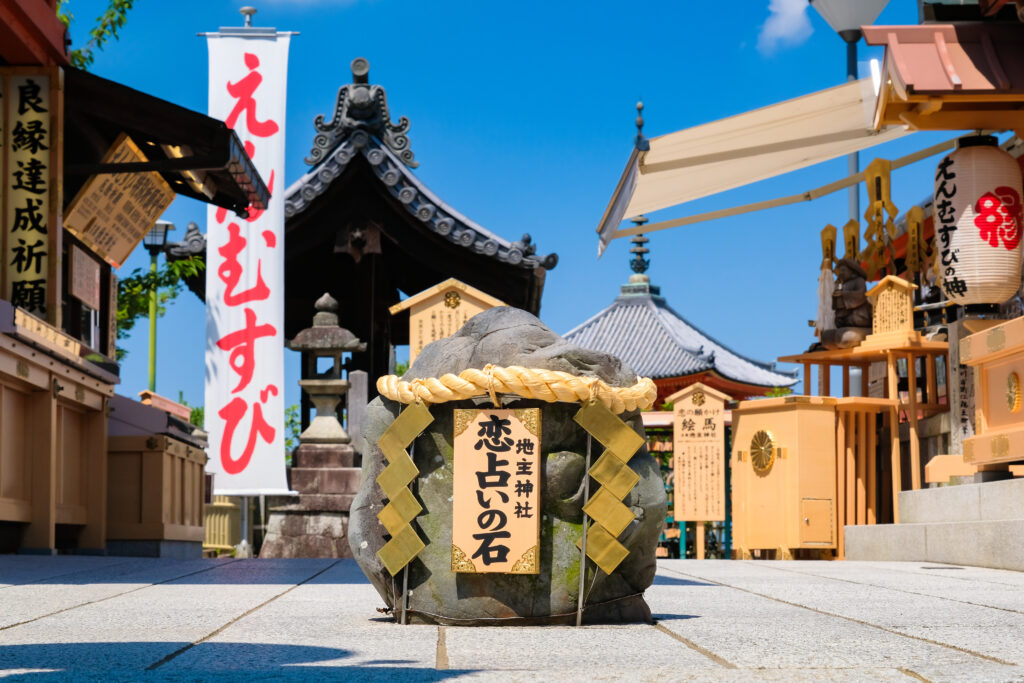
Tainai Meguri
Tainai Meguri is an experiential attraction within Kiyomizu-dera. Located in Zuigudo Hall, it symbolizes rebirth and is meant to represent a journey into the womb of a Bodhisattva. Visitors descend into a pitch-dark corridor to feel the sense of enlightenment upon seeing the light at the end of the path. This experience, though small, is highly memorable for those interested in Buddhist symbolism.
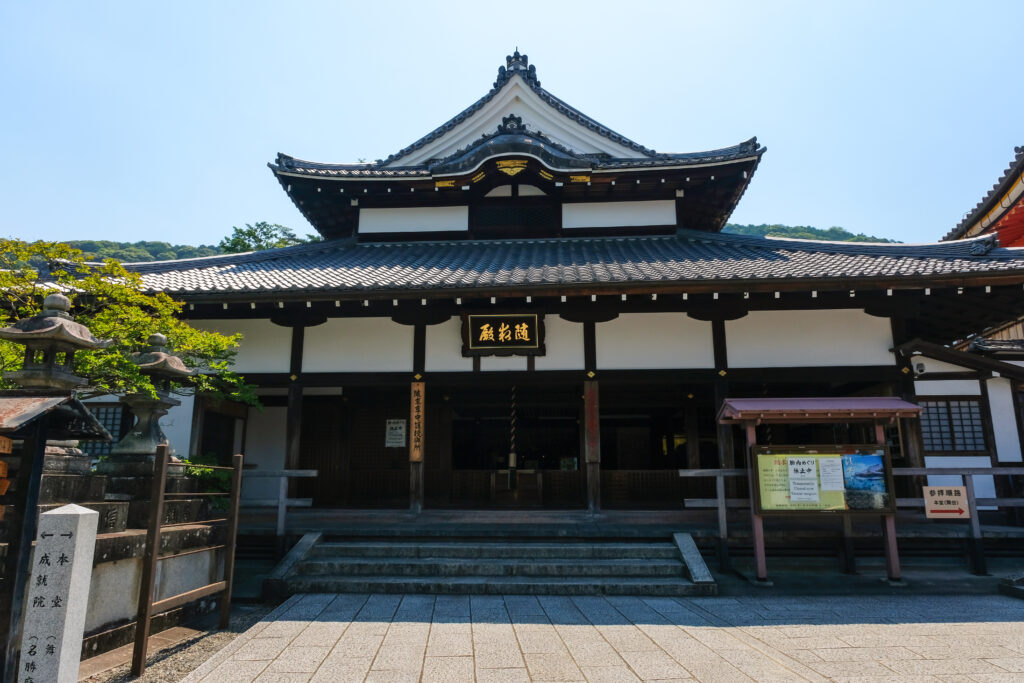
4. Seasonal Views and Festivals
Kiyomizu-dera is known for its seasonal beauty. Spring offers stunning cherry blossoms, while fall brings bright red and orange maple leaves. In addition, the temple holds special night illuminations in both seasons, allowing visitors to experience the grounds in a serene, magical light. The temple also celebrates Buddhist festivals, such as Kannon’s birthday on April 12, drawing many pilgrims.
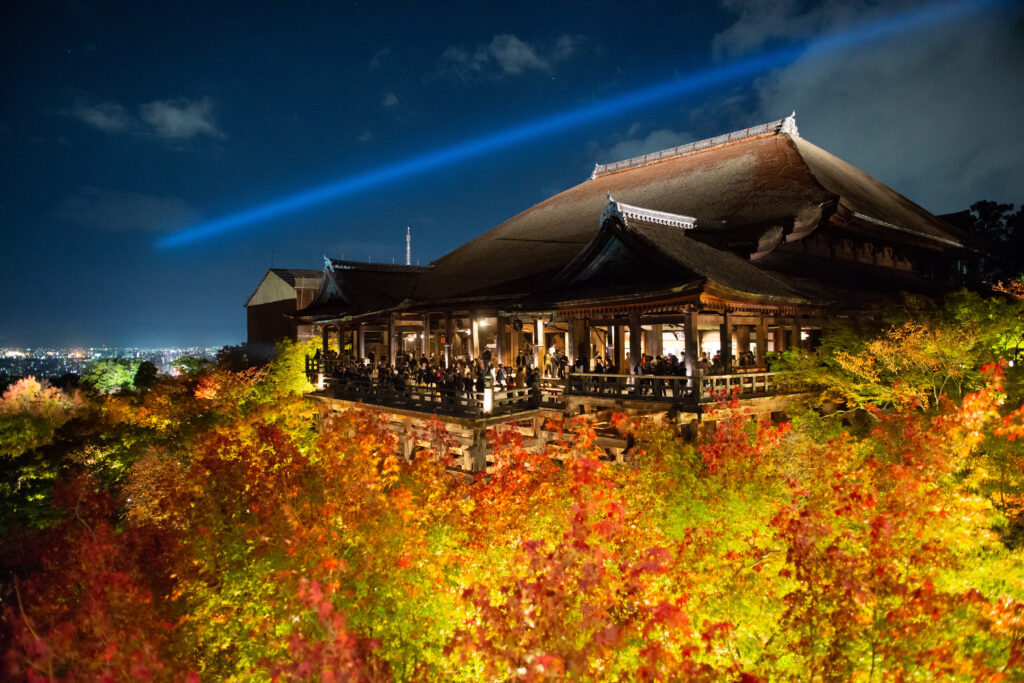
5. Access to Kiyomizu-dera
Kiyomizu-dera is conveniently located in eastern Kyoto and is accessible by public transportation. Visitors can take a bus from Kyoto Station (such as Kyoto City Bus No. 100 or No. 206) and get off at the Gojo-zaka or Kiyomizu-michi bus stop, followed by a 10-minute walk up a scenic hill to reach the temple. Alternatively, the nearest train station is Kiyomizu-Gojo Station on the Keihan Line, from which it’s a 20-minute walk.
6. Hours and Fees
Admission Fees
Adults: 500 yen
Children (elementary and junior high school students): 200 yen
Fees may vary during special events or nighttime illuminations.
Opening Hours
6:00 AM to 6:00 PM
Closed Days
No closed days
